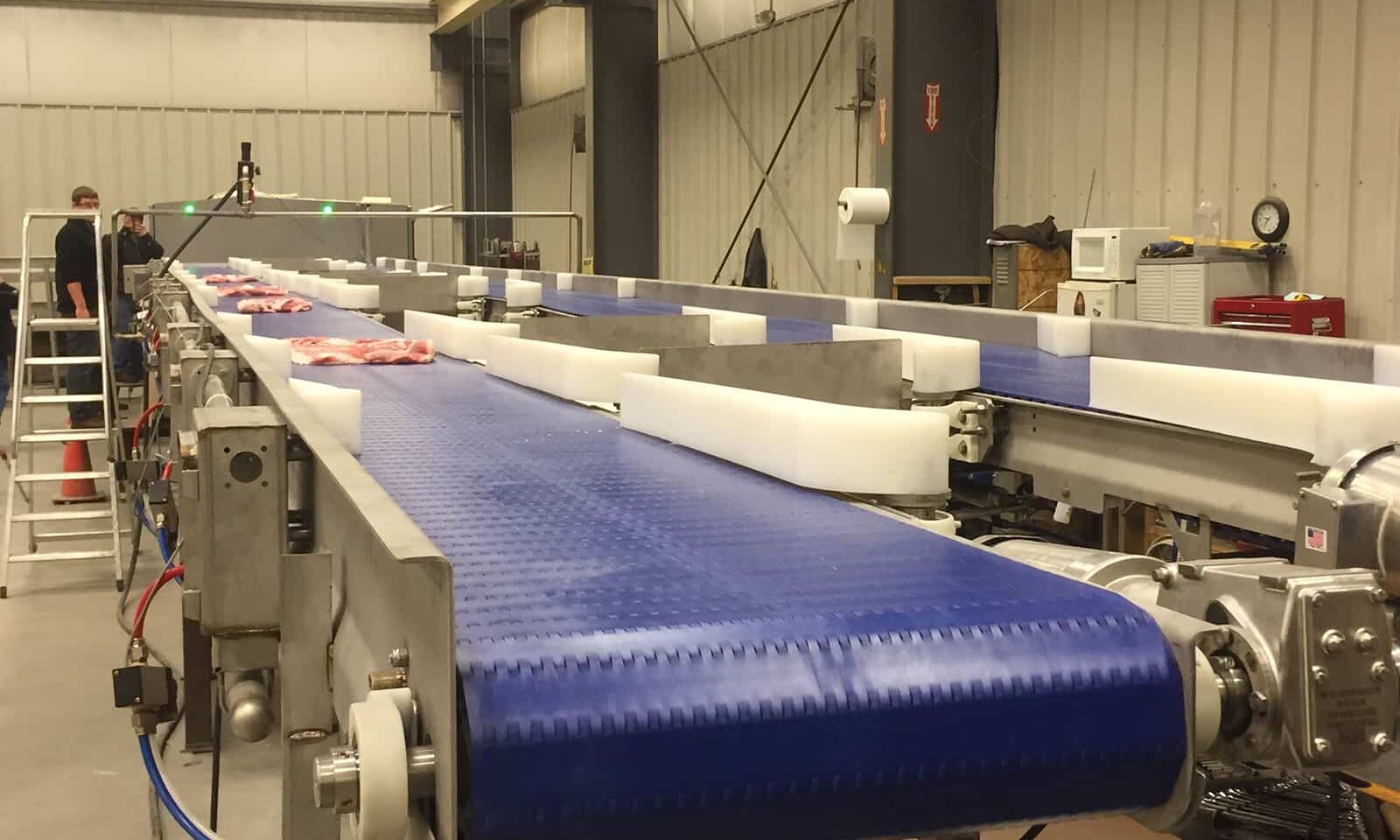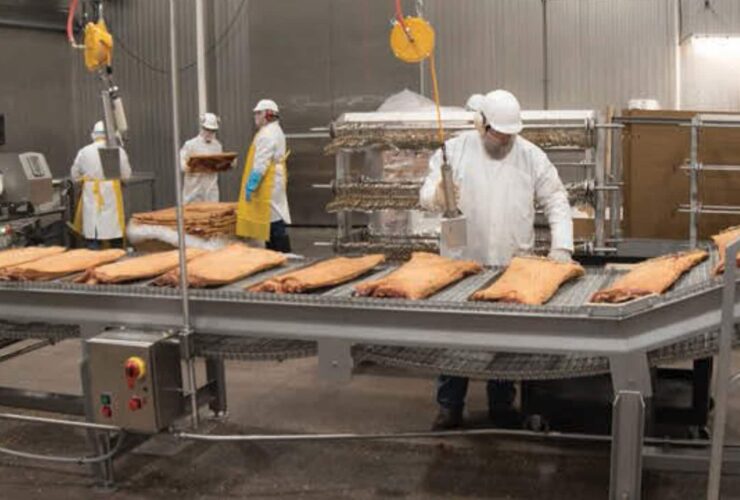Conveyor systems are a big investment that requires regular and ongoing maintenance to ensure they run smoothly for years to come.
Most manufacturers provide instructions to inspect and maintain their conveyors. However, in most food processing facilities, those instructions get stuck in a drawer somewhere and are inaccessible to maintenance personnel.
Not the best strategy for ensuring your investment pays off.
Regular preventative maintenance is necessary to keep your conveyors operating for the long haul.
Benefits of Preventative Conveyor Maintenance
Conveyors are like any other equipment in your facility — over time, they will wear down and component parts will need to be replaced.
Creating a preventative maintenance schedule will help you catch wear and tear before it causes a shutdown.
Here are just a few benefits of creating a preventative maintenance schedule:
- Catch failing components before they cause a shut down
- Ensure the efficiency of your conveyors
- Reduces the risk of injury from a frayed or broken belt
- Prevents changes to conveyor speed
- Prevents costly downtime for repairs
- Keeps your conveyors running efficiently for years to come
Improved Safety
A conveyor that is not properly maintained can become a safety hazard.
A frayed or broken belt can catch an operator’s clothing, pulling them into the machine, causing serious injuries or death.
Following regular maintenance checks will help you catch hazards like this before they become a safety issue.
Reduce Product Contamination
Preventative maintenance can also reduce product contamination.
When a belt fails and breaks off, pieces of the belt can get into the product stream. Or when a bearing fails, metal shavings can get into the product stream.
Regular maintenance checks can catch wear and tear before a component fails, reducing the risk of foreign objects getting into the product stream.
Common Conveyor Belt Maintenance Issues
Before we get to a preventative maintenance schedule, it’s important to understand the most common conveyor and conveyor belt issues you should watch out for.
Improper Tensioning & Belt Slippage
A conveyor belt needs just the right amount of tension to ensure good performance. When that balance is off, it can cause a lack of grip, leading to belt slippage.
An improperly tensioned belt can also cause a belt to fail prematurely and cause it to fray or break off. This can lead to foreign materials contaminating your food product.
Failing Electric Motors
Electric motors can fail, causing significant downtime if you don’t have a replacement on the shelf.
Using an amperage monitor will allow you to see irregularities in the motor and replace it before it becomes an issue.
Failing Gearboxes
Like electric motors, gearboxes can fail and cause significant downtime.
Using a gearbox with a different gear ratio than the conveyor will cause the conveyor to run at a different speed.
Bearing Failure
Bearings are used to ensure the conveyor belt rollers are rotating smoothly. When bearings fail, they can cause a series of issues, including:
- Seizing up the drive shaft which causes a failure in the gearbox
- Drooping in the drive or tail shaft which causes the belt to track wrong
Worn Sprockets
Sprockets that are worn out will not have the propore engagement on the belt nor be able to help track the belting. This will cause belt slippage or the conveyor to just stop working.
Tracking Challenge
A misalignment of conveyor belts can cause belts to drift side to side, causing wear and tear on the belt.
Belt Conveyor Maintenance Schedule
Every conveyor is different and may require a slightly modified maintenance schedule, but most conveyor manufacturers will recommend a preventative maintenance schedule that follows this format.
Always refer to the user manual for your specific conveyor to finalize your maintenance schedule.
Daily Conveyor Maintenance Checklist
Perform the following maintenance checks on a daily basis, during normal operation:
- Visually inspect for debris stuck in the conveyor mechanism.
- Check for unusual noise during normal conveyor operation.
- Visually inspect for cuts, frays, and broken modules on the conveyor belt.
- Take note of any belt slippage.
Weekly Conveyor Maintenance Checklist
Perform the following maintenance checks weekly, when the conveyor system is idle:
- Lubricate roller bearings.
- Scrape parts of the conveyor mechanism to remove debris and foreign objects.
- Check for damages to the conveyor belt and rollers.
- Check whether materials are unloading properly from the conveyor.
Monthly Conveyor Maintenance Checklist
Schedule planned downtime on a monthly basis to perform the following activities:
- Repair damages to the conveyor belt according to the instructions from OEMs and vendors.
- Change oil or other lubricants in the gearbox and power module.
- Replace worn out brushes and scrapers.
- Have a detailed inspection of the belt and conveyor system when the conveyor is shut down and empty.
- Inspect electrical components for damages or faults. Replace/repair them if needed.
- Inspect the following mechanical components and replace them if necessary:
- Idlers
- Rollers
- Belt tracking
- Drive pulley
- Tail pulley
- Impact bed
- V-belts
- O-rings
- Sprockets
- Drive-chains
Annual Conveyor Maintenance Checklist
The following are the maintenance activities to be performed annually:
- Drain gearbox reducers and replace with food grade oil.
- Inspect the motors of the conveyor system. Replace them if necessary.
- Replace electric contacts, fuses, and other similar electrical components.
- Operate the conveyor system without any load. Inspect for any irregularities in the empty operation.
- Operate the conveyor system with standard load and check for faults in all conveyor system components.
- Test the emergency stop functionality on an empty load and full load.
Ensure Longer Conveyor Life
Preventative maintenance is the key to keeping your conveyors operating at peak efficiency for a longer period of time.
Use the schedule template above, refer to the user manuals for your conveyors, and develop a preventative maintenance schedule that will ensure you are inspecting your conveyors on a daily, weekly, monthly, quarterly, and annual basis.
Doing so will save you from costly damage and downtime caused by your conveyors.




